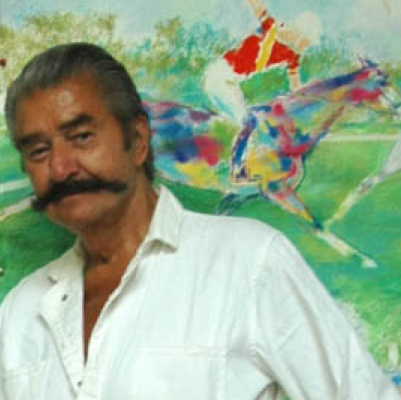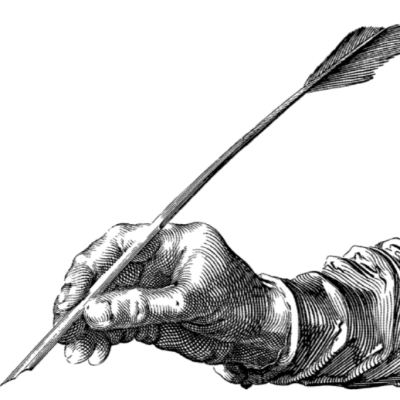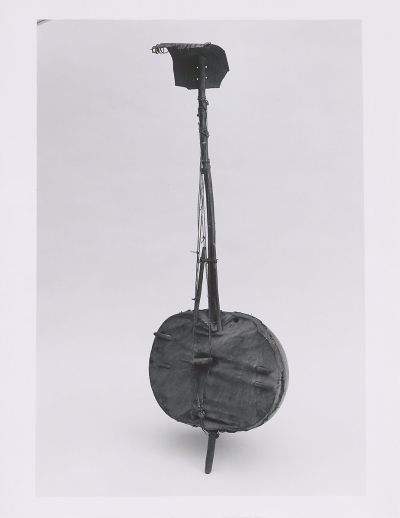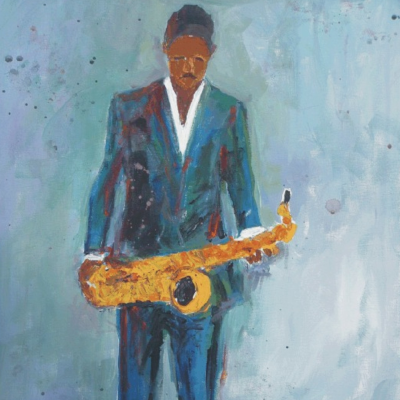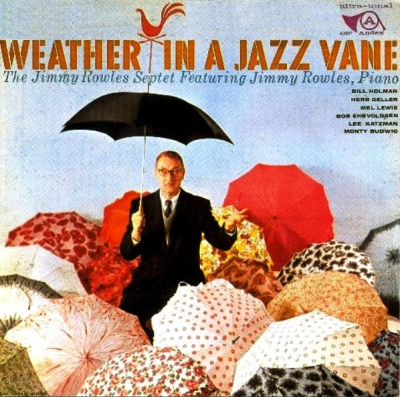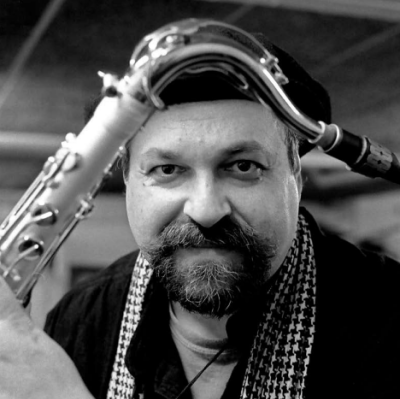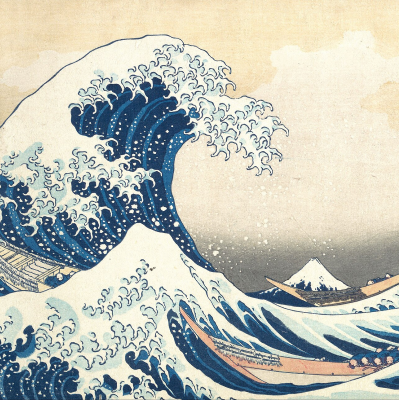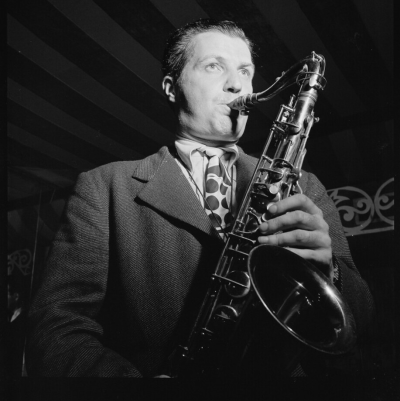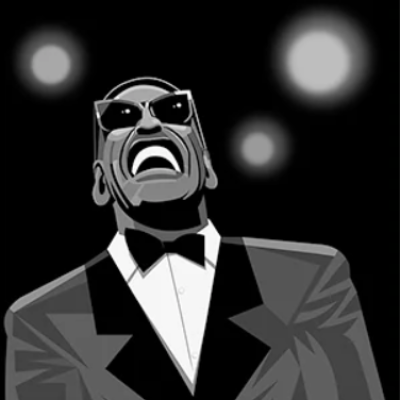While in the midst of reviewing the stories from the over 100 entrants in our current Short Fiction Contest, I have been impressed by the spirit of creativity that shines through in virtually every submission. No matter the story theme, the creative energy and spontaneity is as frequently evident in the writer’s turn of a phrase as it is in a jazz musician’s harmonic progression.
The other day I got into a conversation about how jazz musicians of the 1950’s and the Beat era writers shared an artistic language and had similar creative values that showed up in a variety of examples. The one that came to mind first was in Jack Kerouac’s “On the Road,” where Kerouac is inspired by a jazz performance in Chicago…This is what he writes:
Once there was Louis Armstrong blowing his beautiful top in the muds of New Orleans; before him the mad musicians who had paraded on official days and broke up their Sousa marches into ragtime. Then there was swing, and Roy Eldridge, vigorous and virile, blasting the horn for everything it had in waves of power and subtlety–leaning to it with glittering eyes and a lovely smile and sending it out broadcast to rock the jazz world. Then had come Charlie Parker, a kid in his mother’s woodshed in Kansas City, blowing his taped-up alto among the logs, practicing on rainy days, coming out to watch the old swinging Basie and Benny Moten band that had Hot Lips Page and the rest Charlie Parker leaving home and coming to Harlem, and meeting mad Thelonious Monk and madder Gillespie–Charlie Parker in his early days when he was flipped and walked around in a circle while playing. Somewhat younger than Lester Young, also from KC, that gloomy, saintly goof in whom the history of jazz was wrapped; for when he held his horn high and horizontal from his mouth he blew the greatest; and as his hair grew longer and he got lazier and stretched-out, his horn came down halfway; till it finally fell all the way and today as he wears his thick-soled shoes so that he can’t feel the sidewalks of life his horn is held weakly against his chest, and he blows cool and easy getout phrases. Here were the children of the American bop night.
After reading that, I was reminded of a great story written by Ben Murray that we published in July of 2011 called “Open Marriage,” which was the recipient of the 27th Jerry Jazz Musician Short Fiction Award. Check it out and see for yourself the influence of Kerouac on Murray’s writing, and the rhythm of his writing that connects literature and music.
*
The Open Marriage
by
Ben Murray
_______________________________
ten minutes into sound and I have begun to lean, to lean forward in these shared chairs towards glissando, towards pluck and sizzle and crash. Ellen is a grace note, a cello curve beside me in this dark, lovely, smitten club of jazz.
that I know it’s Ellen’s thigh and hip accompanying mine is a testament to the radii of our ring fingers, the shiny bands there that play so seriously at patience and time.
the sax guy’s finished his bit. he was fierce, his alto breathing, exhuming Dolphy and Jackie Mc. my applauding hands dream of trading fours with his, a mischievous dream because I keep his hands, refuse to trade them back, knowing fully well they’re just ordinary digits without the brain above, all those synapses full of next notes, phrases, pauses. but that doesn’t matter, it’s my crazy-ass dream and his fingers will be enough. enough to put this non-playing buff on stage to blow rings around standards and originals, around these club walls coated in the royal spit and exhale of kings and dukes and counts and birds.
and Ellen, this is my confession to you: my fantasies are not of the flesh, of my mid-century flesh attempting to stop time under the caresses of smooth, unlined hands and fingers harboring secret knowledge of iThis and iThat, iPhone fingers pushing nano-buttons as my eyes water, just watching.
my fantasy, Ellen, is to leave this perfectly fine life we’ve led and run away to the circus, the jazz band circus of tightrope-ing bass strings, crowd tamers, bearded, goateed gents sprouting horns, magicians vanishing, reappearing behind unlocked keys and crashing cymbals, all the happy, sad, rapt clown faces seen in the dim dark, their ears as big as the ceiling speakers hovering precariously above them.
the pianist is soloing now. I imagine your relief. an instrument you recognize. you’ve played one yourself: some Chopin nocturnes, some carols, Eleanor Rigby.
but nothing like this. the same eighty-eight keys, sure, the same chunk of transcendent furniture you’ve sat before, that your legs have slightly parted for.
but look at those fingers, those chords, single note runs running away with harmony and rhythm only to bring it all back next phrase–did you know the Heintzman anchoring our living room was even related to such an animal, even capable of such jumps through hoops?
I want to know, would I love you more if you could play like this black dude channeling McCoy, Keith, and Wynton K? I love you, but I don’t think you’ve ever swung in your life, anticipating, leaning in on that next note, that next breath, one effortless flow springing forth from the there always aware of the here.
no, safe to say you’ve never swung, and nor have I, the closest to it maybe the time we first met, at that high school dance of scotch-taped banners and plastic punch refills, when I walked up to you all brazen-cool as if I’d borrowed John Travolta’s or Jimmy Dean’s jeans for the night, I suddenly this guy who knew what he wanted, whose tongue miraculously un-twisted long enough to ask you to dance–to the Bee Gees’ Night Fever, if memory serves–my voice miraculously stammer-free before a girl for once, my face free of the unasked for, un-applied blush makeup which usually bloomed on cue before the promise of copped feels, kisses and walks around blocks and worlds. I swung, leaning into you. you had to say yes.
yes.
I glance over at you now; the last Gremlin, the last Trans Am have long since left the aromatic, weedy air of the school parking lot three decades ago, left and long since gone back to clockwatching parents nervously recalling their own formative dances. three decades ago and here you are, indulging my love of combos and controlled chaos, the snap of downbeat fingers pointing towards past and future stars.
in my ideal world, your head would be bobbing in time to the music–the horns are back, they’re bringing it back to the head–and your feet would be dancing tap against this great percussive skin of a floor, one more involuntary, polyrhythmic beat of feet,
and in that same ideal world you would lean over to me right now and whisper in my ear how much this piece sounds like an old Horace Silver hard-bop tune, how the drummers’ punctuating press rolls echo Art Blakey’s, how the sax and trumpet guy are standing bell to bell, just like Hank Mobley and Kenny Dorham in one of those black and white Francis Wolff Blue Note recording session shots, all the color needed right there in the music spun by semaphoring tonearms, there in the crackle of groove.
you are not visibly moved, Ellen, but you sense my scrutiny and look my way, and there’s that smile I so gratefully see in all kinds of dim and dark, it’s looking my way, that smile you long ago improvised, on the spot, just like that, teeth and lips a flash of song to beat the Bee Gees’.
I smile back and grip your hand in mine, just as the band stops the tune on a rim-shot dime. my arms go up automatically to applaud, and I pull yours up with mine, an awkward, brief push-me pull-you pirouette before I release your hand, and we look at each other and laugh, our laughter drowned out by the percussive claps, the off-beat exhortations, the Yeahs! and Whoops! of the crowd, our own hands now freed to properly strike palm against palm, this communal ritual keeping the beat for the band between songs, you and I and the club counting in the band for their next number, our collective breath caught and held as applause dies, as new notes are born in the hush, in the anticipatory silence of what’s next, what’s new, all the things we are played out for us on tiny, crowded stages, in front of dusty curtains, glints of brass and ivory and cymbal and house-wine smiles caught in the spot-lit dark
we lean, we lean again into the sound.
_____
If you want to read more about the connection of jazz and literature, you may enjoy our interview with David Amram, who was Kerouac’s musical collaborator.
Check back in early November for the publication of the winning story in our 34th Short Fiction Contest.







